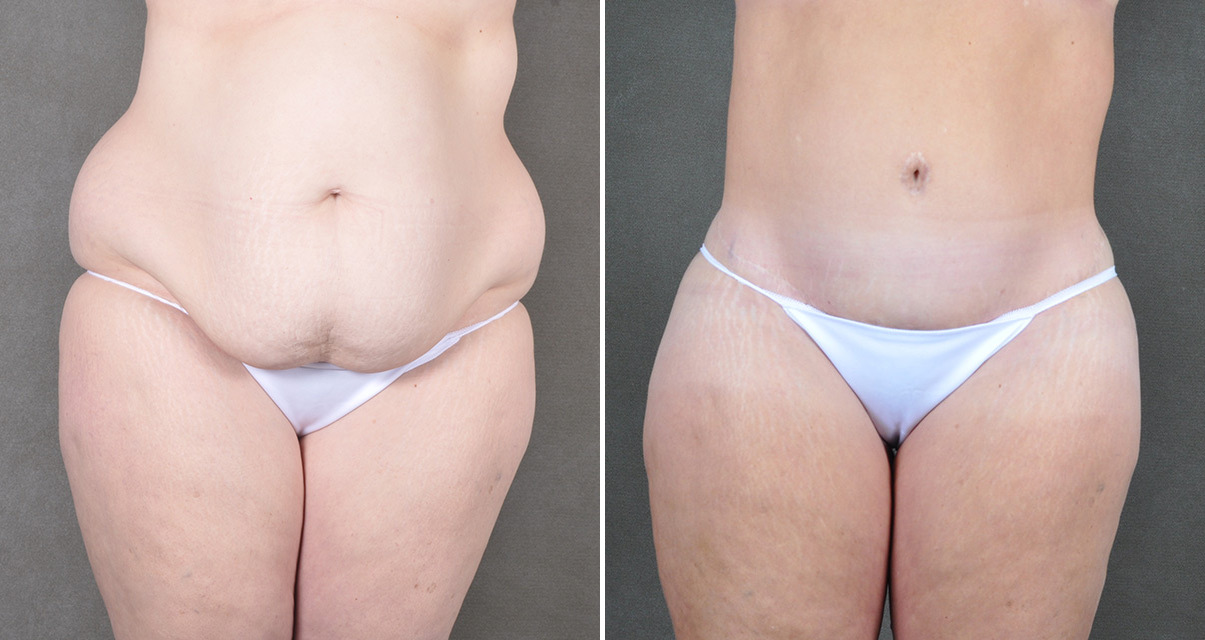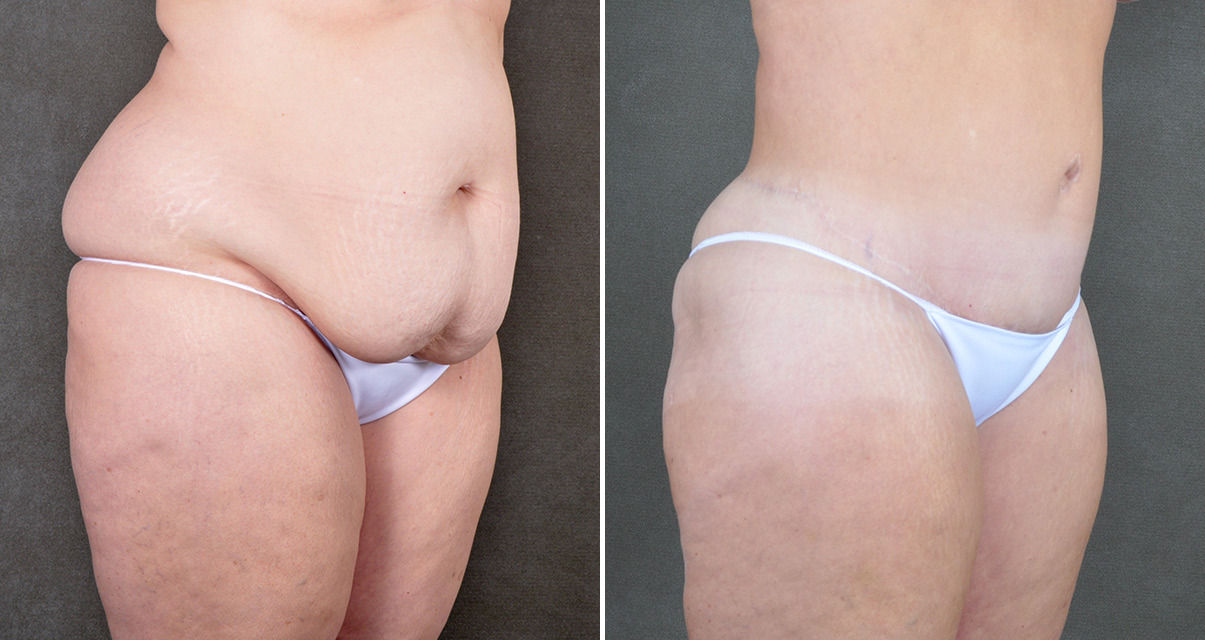Have you been dreaming of a flatter stomach but worry about an underlying hernia complicating things? You’re not alone. Many patients are surprised to learn that they can address both concerns in a single, transformative procedure: a tummy tuck with hernia repair.
This combination not only improves the appearance of your midsection but also corrects functional issues like bulging or discomfort caused by hernias. If you’re considering this powerful pairing, keep reading — the benefits might be exactly what you’re looking for.

Why Do People Get Hernias?
A hernia occurs when an internal part of the body pushes through a weakness in the muscle or surrounding tissue wall. Most commonly, hernias happen in the abdominal area. They can be caused by anything that puts pressure on the belly — heavy lifting, obesity, pregnancy, or even straining during bowel movements. Over time, this pressure can create or worsen an opening, allowing organs or fat to protrude, which results in a visible or sometimes painful bulge.
Types of Hernias
Not all hernias are the same — and neither are their causes or symptoms. Understanding the different types of hernias can help you recognize what might be affecting your body and why a tailored surgical approach is important. Below are the most common hernias seen in patients considering combined repair with a tummy tuck.
Ventral Hernias (Epigastric & Umbilical Hernia)
Ventral hernias are bulges that develop through weak areas in the abdominal wall. Epigastric hernias appear between the belly button and breastbone, while umbilical hernias form directly at or near the navel. These hernias can be congenital or develop over time due to increased abdominal pressure. They often present as soft lumps and may worsen with strain, making surgical repair essential for comfort, aesthetics, and long-term abdominal health.
Incisional Hernias
Incisional hernias develop at the site of a previous surgical incision, often where the abdominal wall has been weakened. They can appear months or even years after surgery and are more likely to occur if the wound didn’t heal properly or if excessive strain was placed on the area during recovery. These hernias can grow over time, potentially leading to pain, discomfort, or digestive issues if left untreated.
Epigastric Hernias
Epigastric hernias occur in the upper abdomen, typically between the breastbone and the belly button. They form when fat or tissue pushes through a weak spot in the abdominal muscles, often appearing as small, painless lumps. While some may go unnoticed for years, others can cause discomfort, especially during physical activity or strain. Though generally small, they can grow over time and usually require surgical repair to prevent complications.
Inguinal and Femoral Hernias
Inguinal hernias are the most common type and occur when tissue pushes through the lower abdominal wall near the groin. Femoral hernias are less common but occur in a nearby area, often affecting women more than men. Both types may cause noticeable bulging, discomfort, or pain—especially when lifting, coughing, or standing. If left untreated, they can lead to serious complications like strangulation, making timely surgical repair crucial.
Diastasis Recti (After Pregnancy)
Diastasis recti is the separation of the abdominal muscles, most often seen after pregnancy. As the uterus expands, it can stretch and weaken the connective tissue between the left and right sides of the abdominal wall. This condition may lead to a visible bulge, poor core strength, and back pain. While not a true hernia, it often occurs alongside one and can be corrected during a tummy tuck.
SPECIALIST CARE YOU CAN TRUST
You can trust the entire staff to help make your visit as comfortable and safe as possible!
Can You Have Hernia Surgery and a Tummy Tuck at the Same Time?
Yes — in many cases, hernia repair and a tummy tuck can safely be performed together during a single operation. This approach is especially effective when both cosmetic and structural concerns are present in the abdominal area. By combining the procedures, patients benefit from one surgical plan, one anesthesia session, and a unified recovery period. It also allows the surgeon to reinforce the abdominal wall while enhancing the body’s contours.

Benefits of Combining Tummy Tuck with Hernia Repair Surgery
When performed together, a tummy tuck and hernia repair offer more than just convenience — they provide a comprehensive solution for both functional and aesthetic concerns. Many patients who struggle with weakened abdominal muscles, excess tissue, and loose skin, and hernias can achieve a flatter, stronger midsection with just one surgery.
Aesthetics & Functional Results
By combining a tummy tuck with hernia repair, patients enjoy not only structural reinforcement but also cosmetic enhancement. The combined tummy tuck procedure flattens the abdomen, removes excess skin, and strengthens weakened muscles—all in one go. The result is a more toned, contoured appearance that also improves posture and core stability.
Reduced Risk of Recurrence
Addressing both a hernia and abdominal wall weakness in one procedure leads to a more comprehensive repair. By tightening the stomach muscles and reinforcing the affected area, surgeons can lower the likelihood of hernias coming back. This dual approach helps create a stronger, more stable core and long-term surgical success.
Single Recovery Process
Recovering from two procedures at once means less time off your feet and fewer disruptions to your routine. Instead of undergoing two separate surgeries with two healing periods, patients only need to manage one. This streamlined recovery can reduce stress, minimize time away from work, and simplify the healing process overall.
One Cost for Two Procedures
Combining a tummy tuck with hernia repair can also be cost-effective. While each surgical procedure alone involves separate facility, anesthesia, and surgeon fees, doing them together means one surgical session and one recovery period. This can significantly reduce overall expenses, making it a smart financial decision for patients seeking both functional and cosmetic improvements.
Tummy Tuck with Hernia Repair Cost
A combined tummy tuck (abdominoplasty) and hernia repair procedure typically ranges from $8,000 to $20,000 or more. The total cost can vary based on several key factors, including the surgeon’s experience, the complexity of your hernia, the type of tummy tuck required, and regional pricing differences. Below is a closer look at the variables that influence pricing:
- Surgeon’s Experience and Location: Highly experienced surgeons or practices in metropolitan areas may charge more for their expertise and operating costs.
- Type of Hernia Repair: Complex hernias or those requiring mesh placement can add to the procedure cost.
- Type of Tummy Tuck: A mini tummy tuck is typically less expensive than a full tummy tuck, which addresses a larger area and involves more extensive correction.
- Anesthesia and Facility Fees: These are billed separately from the surgeon’s fee and can significantly affect the overall price.
- Post-Surgery Care: Items like compression garments, prescriptions, and follow-up visits should be included in your budgeting.
Will Insurance Pay for Tummy Tuck with Hernia Repair?
Insurance coverage for a tummy tuck combined with hernia repair depends on several factors:
- Specific Insurance Policies: Policies vary, so contacting your provider directly is essential for understanding your individual coverage.
- Medical Necessity: Tummy tucks are usually considered cosmetic and not covered by insurance. Hernia repair, on the other hand, is often deemed medically necessary if it causes pain, discomfort, or functional limitations.
- Type of Hernia: Incisional hernias are more likely to be covered by insurance than umbilical or ventral hernias.
- Underlying Health Conditions: If the tummy tuck helps address a medical issue like diastasis recti or obesity, coverage may be more likely.
- Documentation: Submitting thorough documentation—including physician notes, medical history, and photos—can help establish medical necessity.
- Combination Procedure: Insurance may cover only the hernia repair portion of the combined surgery, excluding the tummy tuck.
Before and After Photos


* Each patient is unique and individual results may vary.
Tummy Tuck with Hernia Repair Recovery
Recovery time from a combined tummy tuck and hernia repair for both female and male patients, typically takes several weeks, with most patients returning to light activities within 2 to 3 weeks and more strenuous activities after 6 to 8 weeks. Because two procedures are performed at once, the recovery can be more intensive, but also more efficient. Following your surgeon’s guidance closely is key to a smooth and safe healing process.
Here are some key recovery tips to help ensure the best outcome:
- Follow All Post-Op Instructions: Carefully adhere to the guidelines provided by your surgical team, including wound care, medications, and activity restrictions.
- Wear Compression Garments: These help minimize swelling, support healing tissues, and improve your final results.
- Limit Physical Activity: Avoid heavy lifting, bending, or strenuous movement for the first few weeks to prevent complications or strain on your repair.
- Sleep Elevated: Resting with your upper body slightly elevated can reduce swelling and tension in the abdominal area.
- Stay Hydrated and Eat Nutritiously: Proper nutrition supports tissue healing and boosts your energy during recovery.
- Attend All Follow-Up Appointments: Regular check-ins allow your surgeon to monitor your progress and address any concerns early.
Potential Abdominoplasty and Hernia Surgery Complications
While most patients experience successful outcomes, it’s important to understand the risks that can accompany any surgery. Complications may result from individual health factors, how well post-operative instructions are followed, or even from technical aspects of the surgery itself. Awareness and proper planning can significantly reduce the chances of complications.
Common risks and possible complications include:
- Infection: As with any surgery, infection is a possibility, especially if wounds aren’t cared for properly.
- Bleeding or Hematoma: Accumulation of blood under the skin may require drainage.
- Seroma: Fluid buildup may occur and need to be drained post-op.
- Scarring: While scars fade over time, their thickness or appearance may vary.
- Poor Wound Healing: Smoking, poor nutrition, or underlying health conditions can interfere with proper healing.
- Hernia Recurrence: Inadequate repair or overexertion during recovery can lead to recurrence.
- Muscle Weakness or Numbness: Some patients may experience temporary or permanent sensation changes.
- Unsatisfactory Aesthetic Results: Contour irregularities or asymmetry may occur if the procedure isn’t performed with skill and precision.
- Anesthesia Risks: Reactions to anesthesia are rare but possible and should be discussed with your provider.
How to Ensure a Safe Tummy Tuck with Hernia Repair Procedure
Choosing a qualified and experienced surgeon is essential when planning a tummy tuck with hernia repair. These procedures require a thorough understanding of both cosmetic and functional anatomy to ensure safe and lasting results. An experienced specialist can evaluate your unique condition, recommend the most effective approach, and take steps to minimize complications — giving you the best outcome possible.
At Aesthetic Surgical Images in Omaha, NE, our team of four board-certified plastic surgeons brings together a wealth of experience and collaborative expertise. Each surgeon has been handpicked not just for their credentials, but for their ability to work in harmony to deliver optimal results. With every member of our surgical team ACLS certified, we uphold the highest standards for your safety and care. Ready to take the next step? Call us today at 402-390-0100 or visit our contact page to schedule your personalized tummy tuck consultation.
